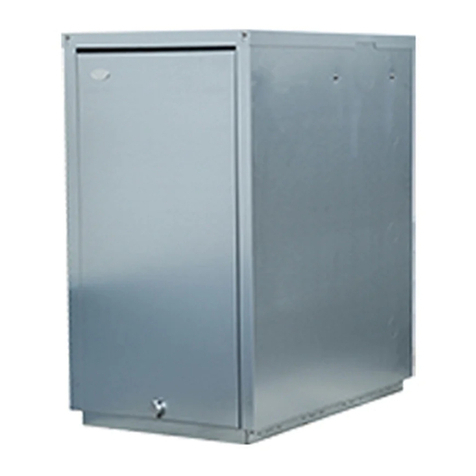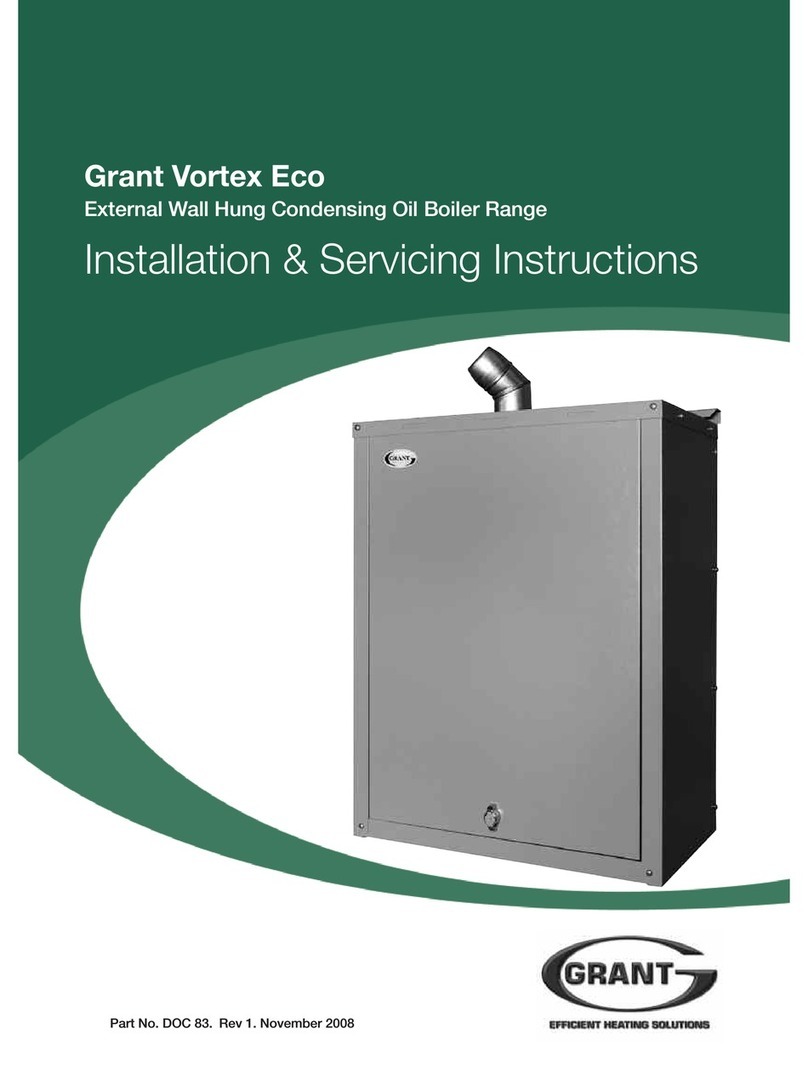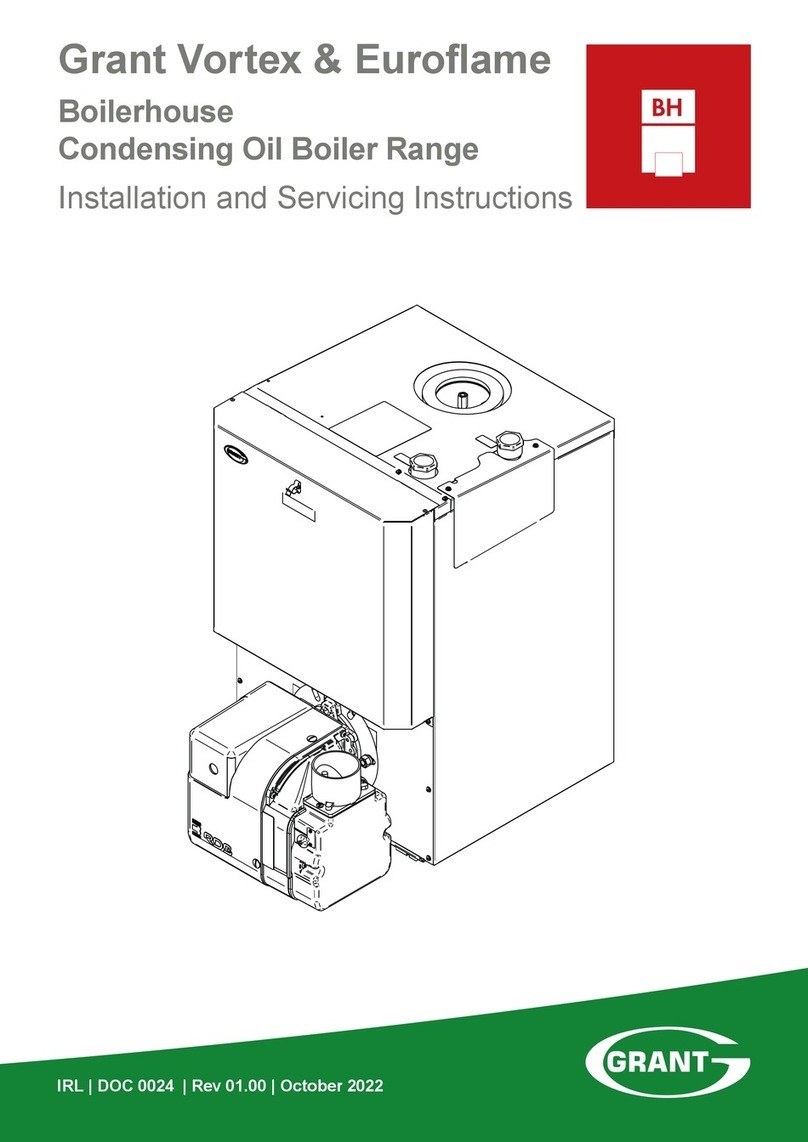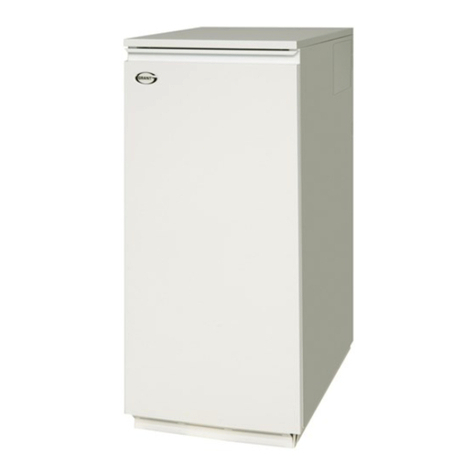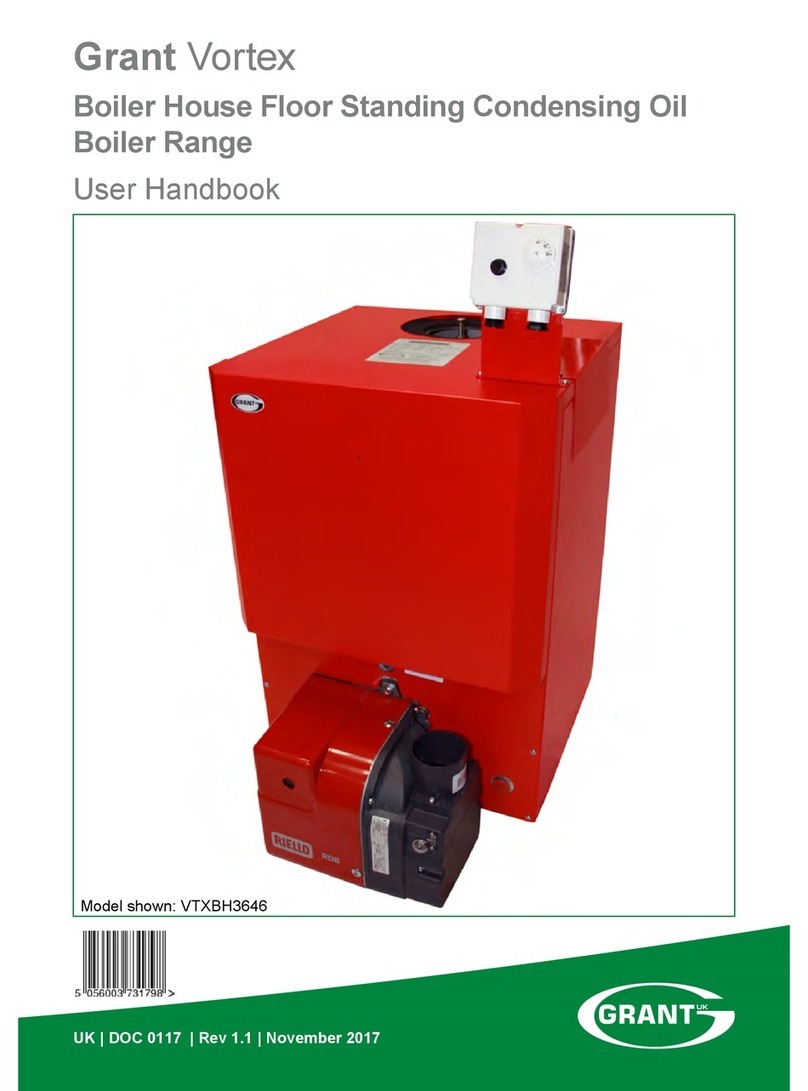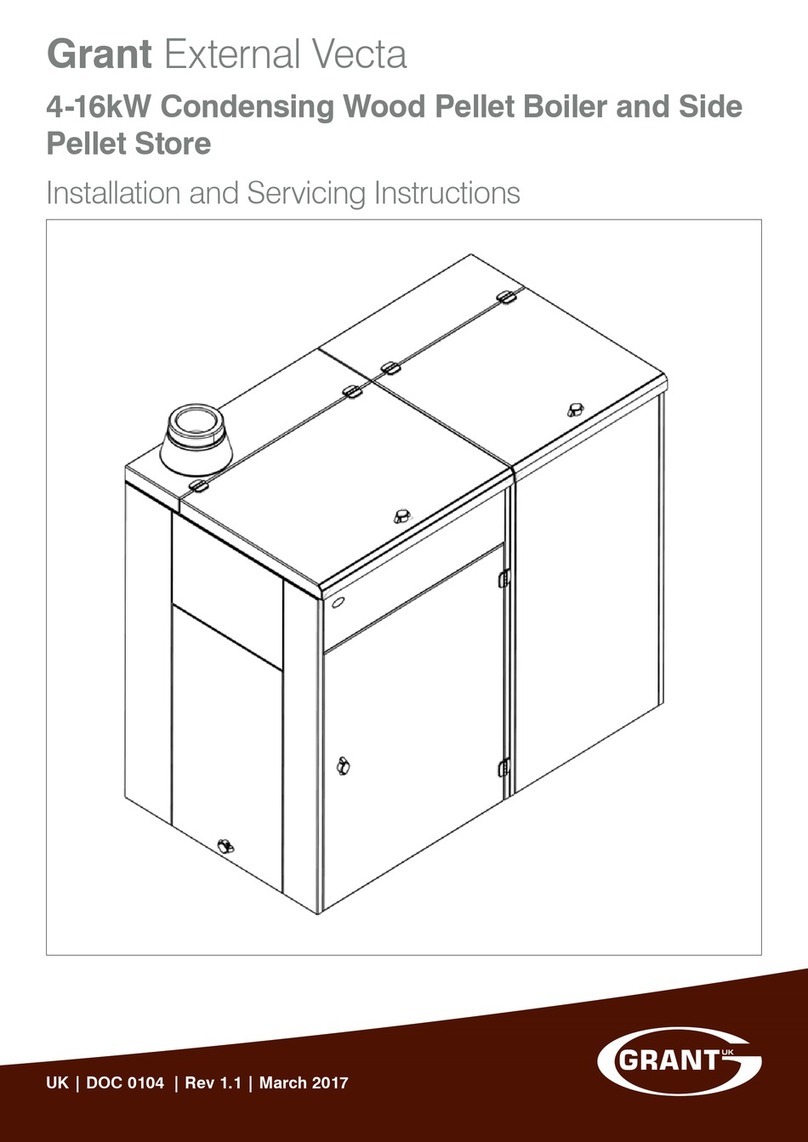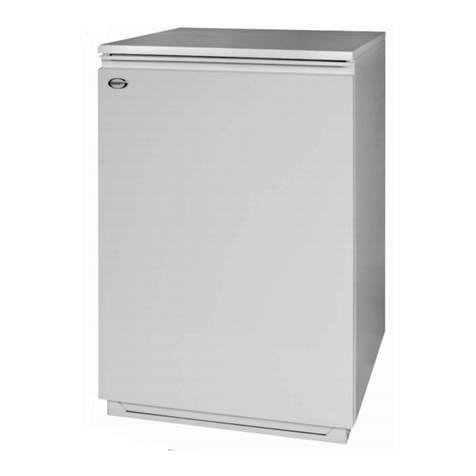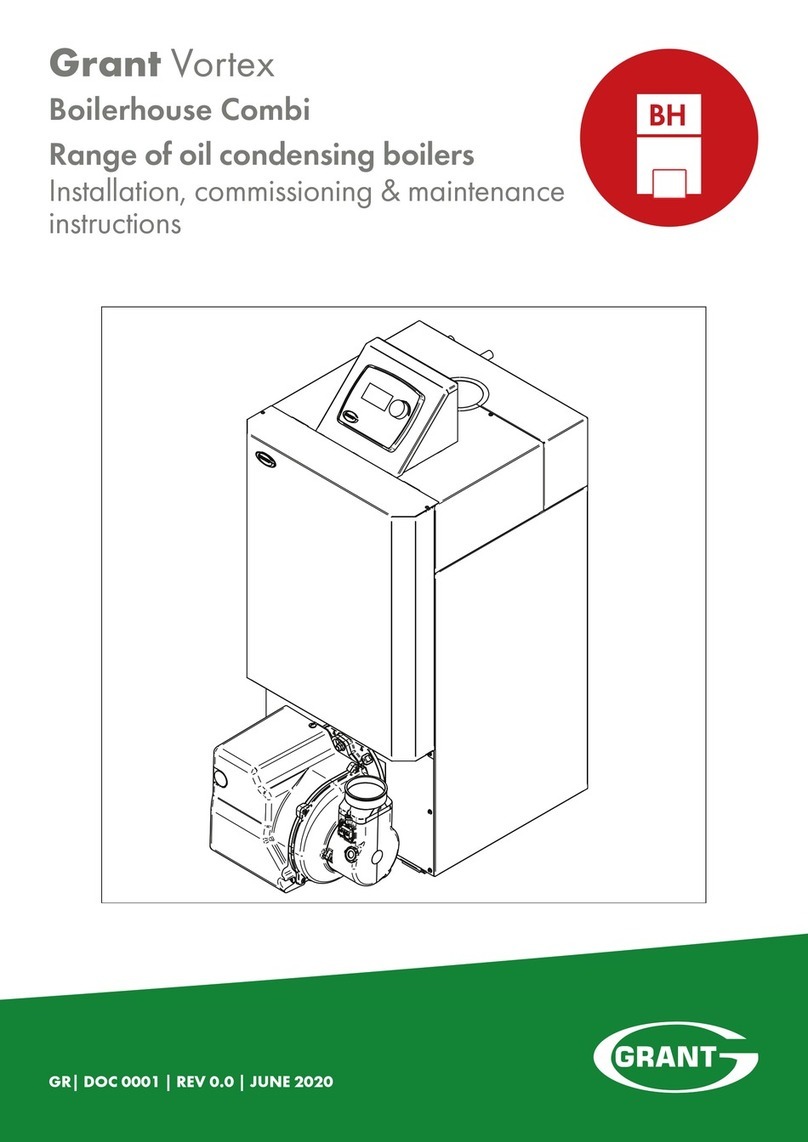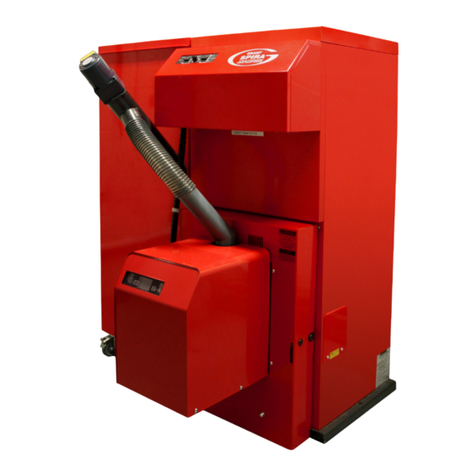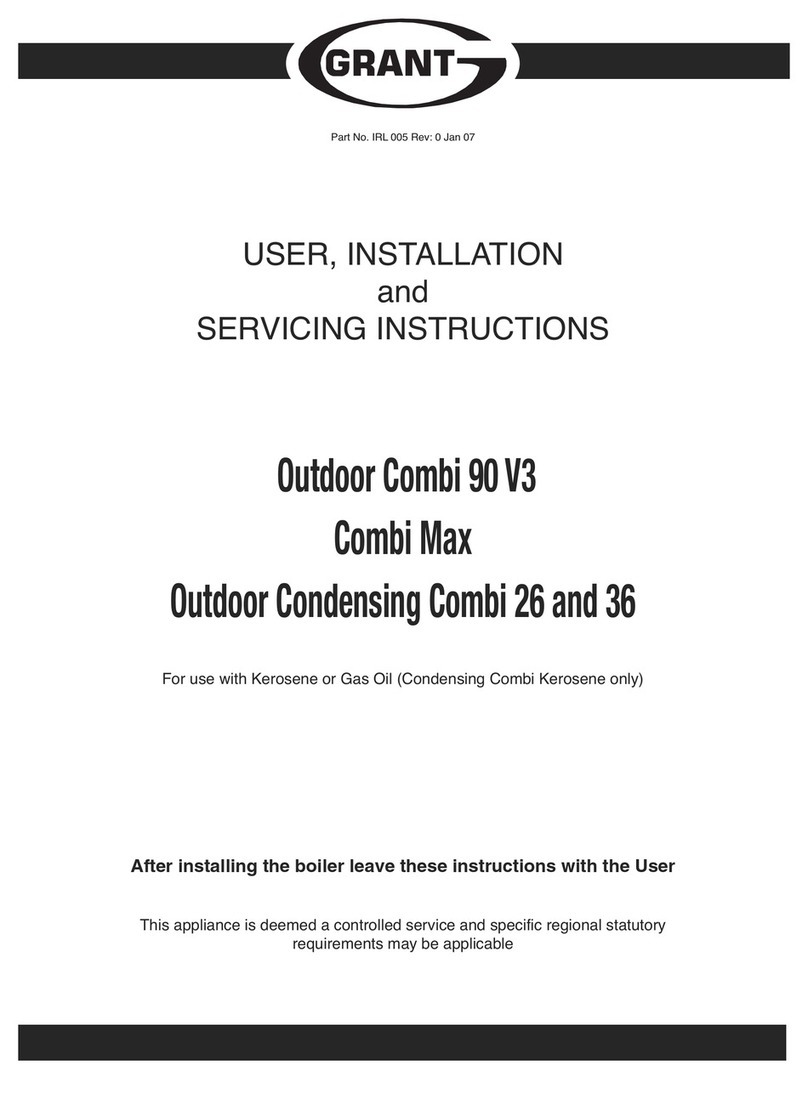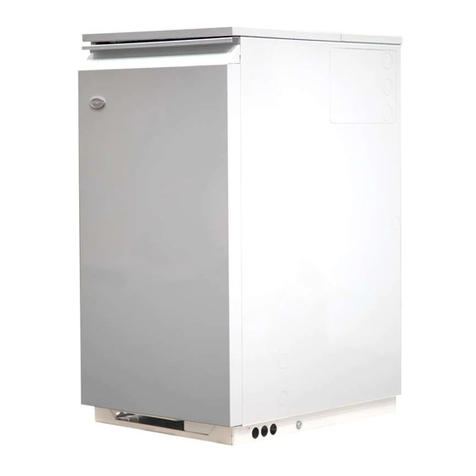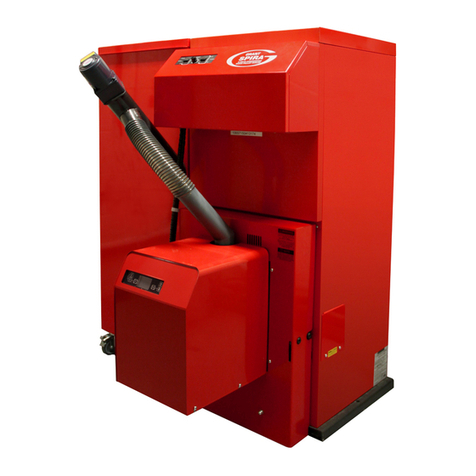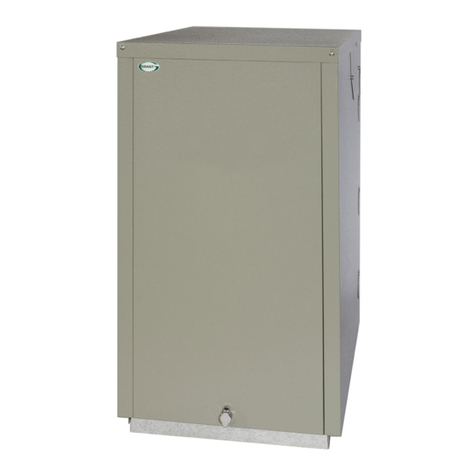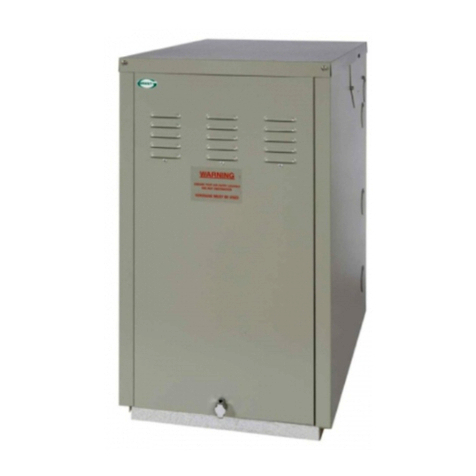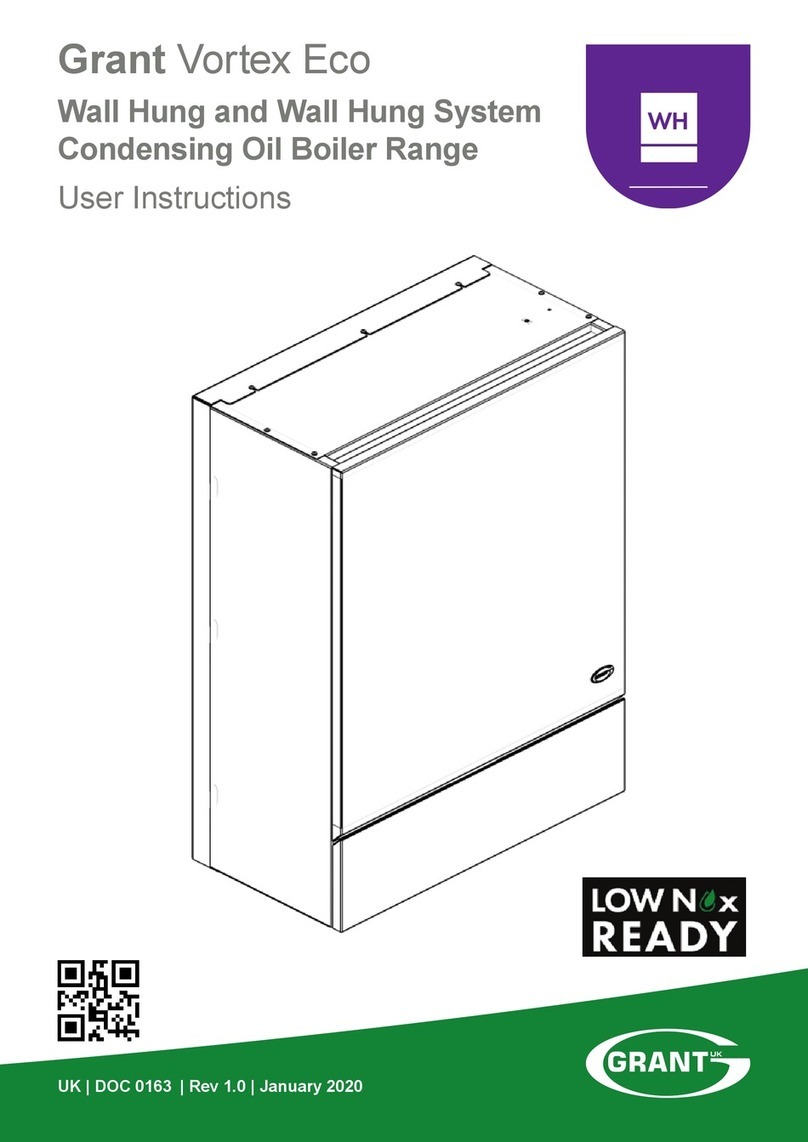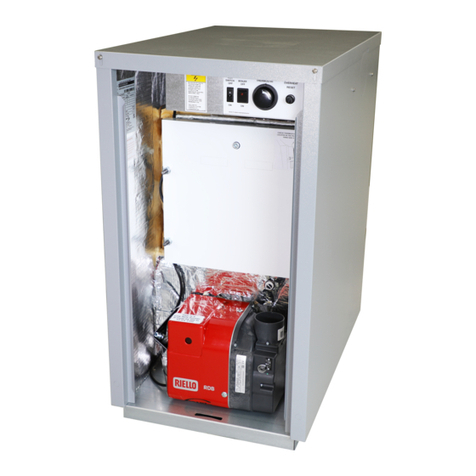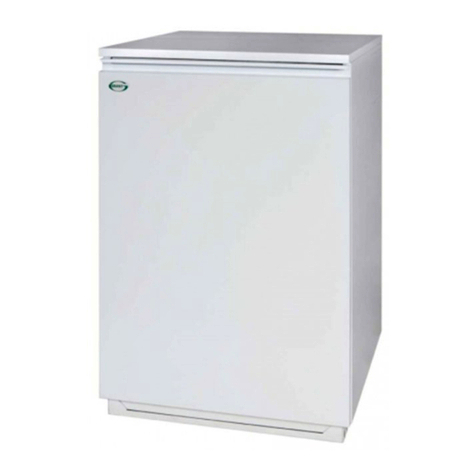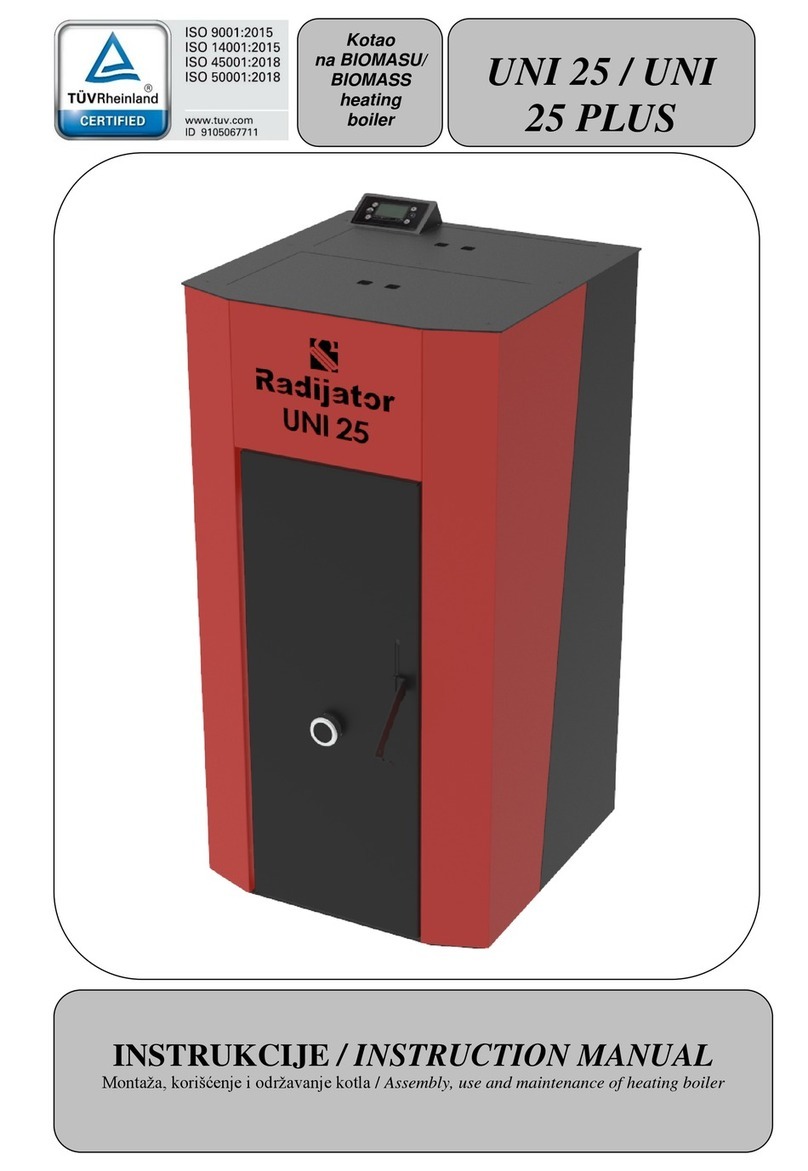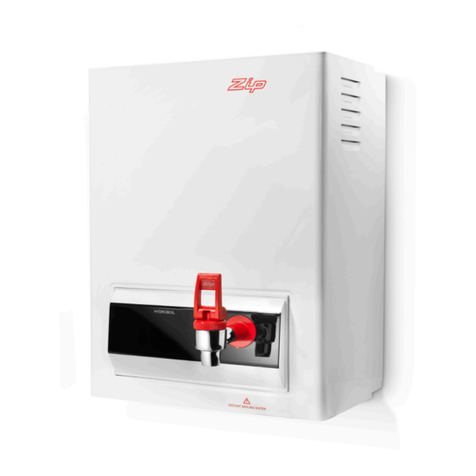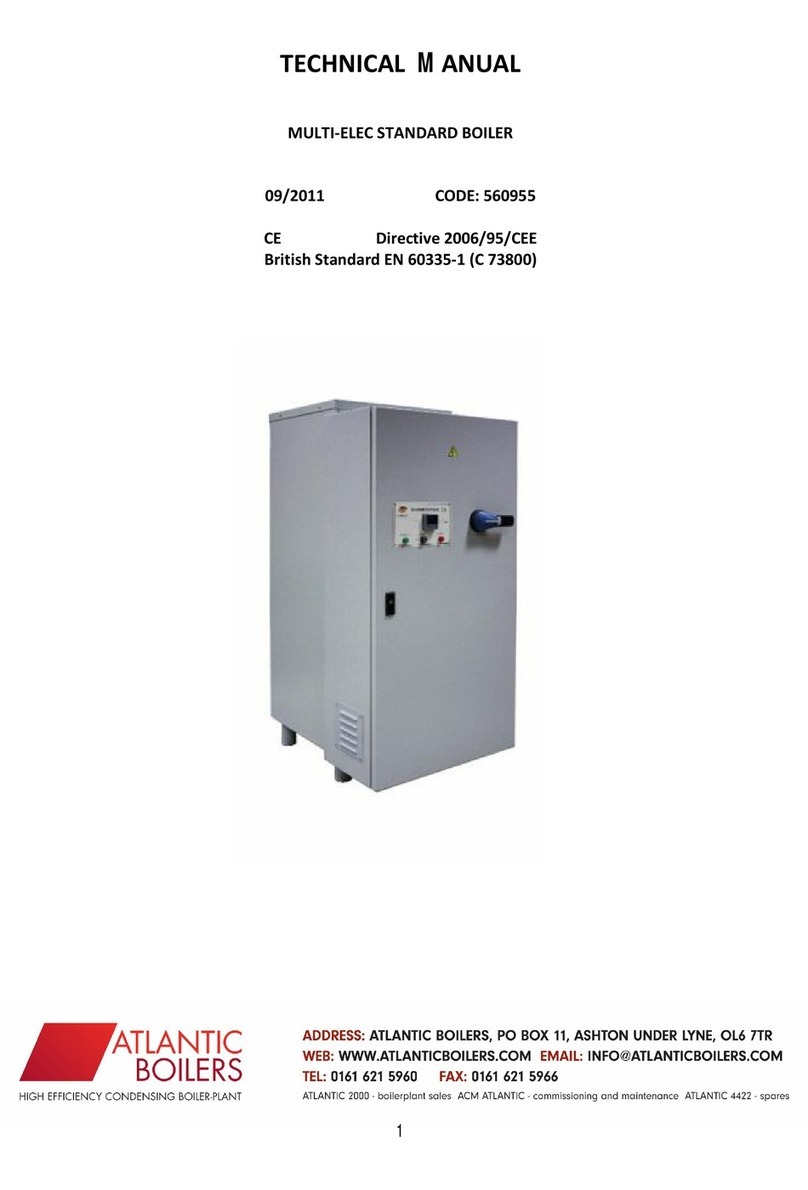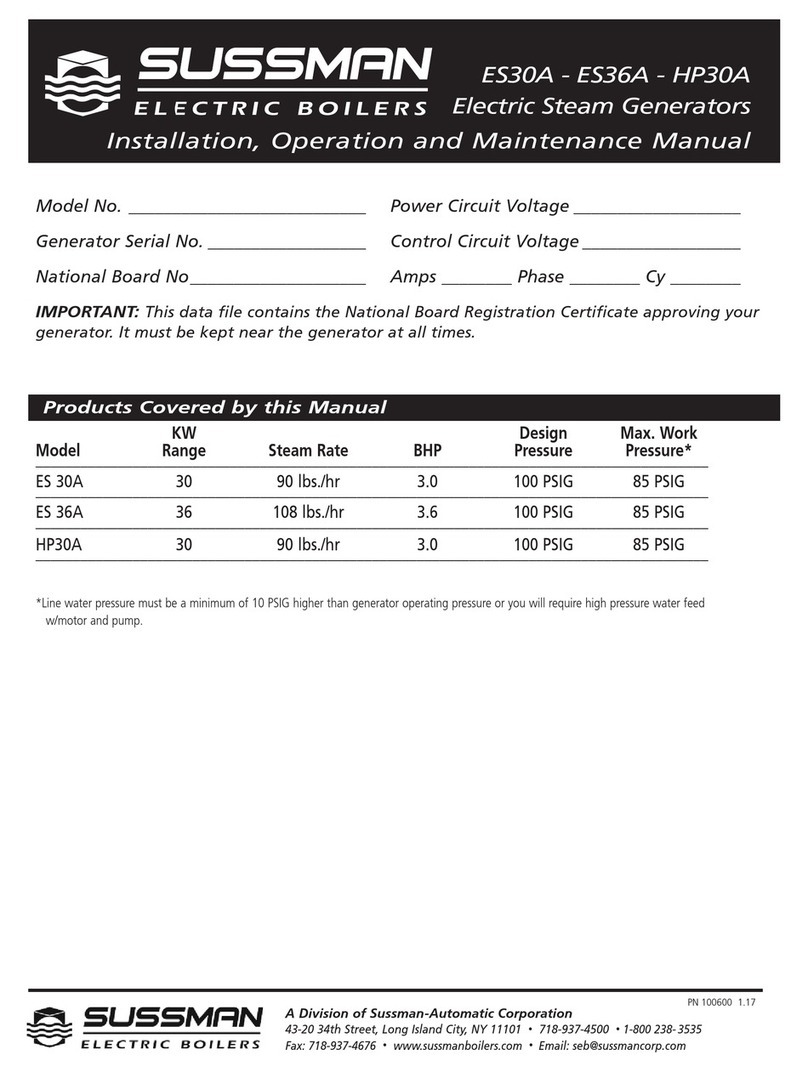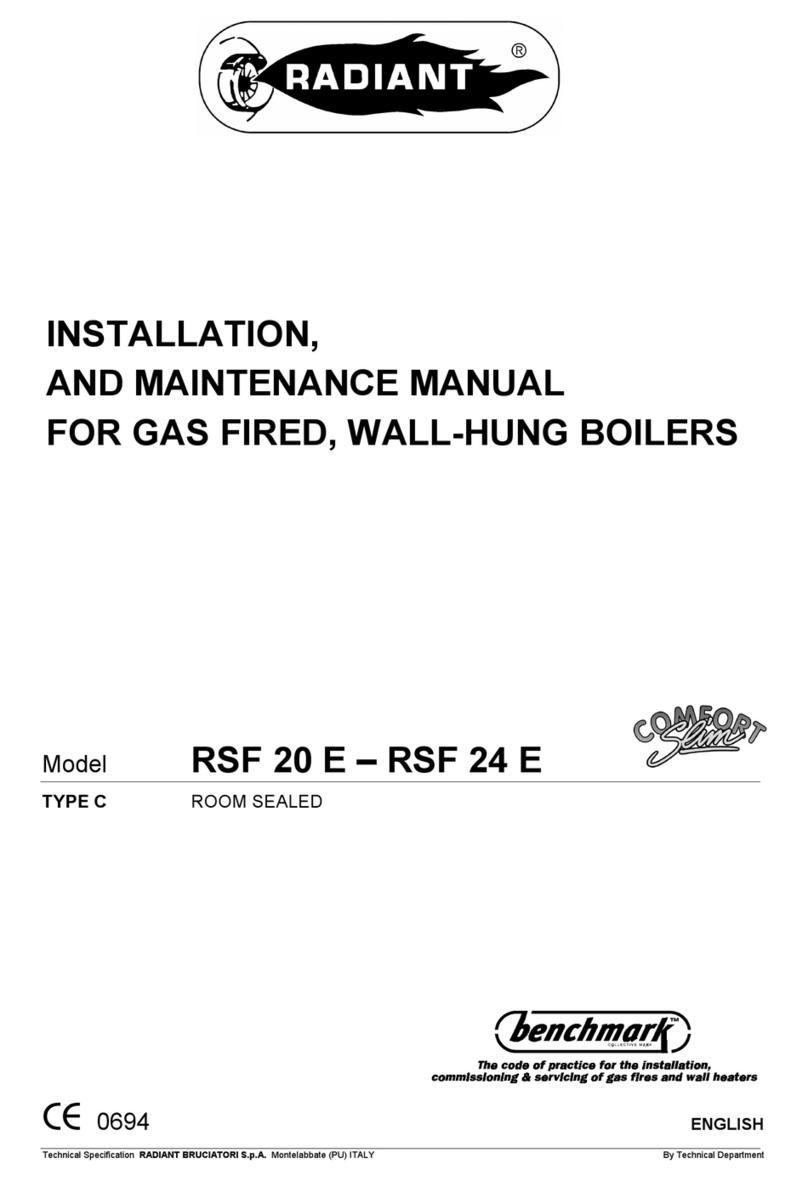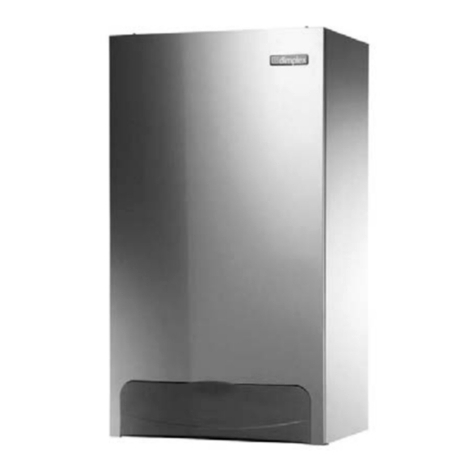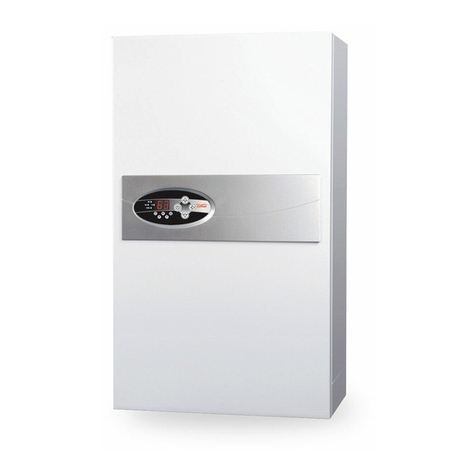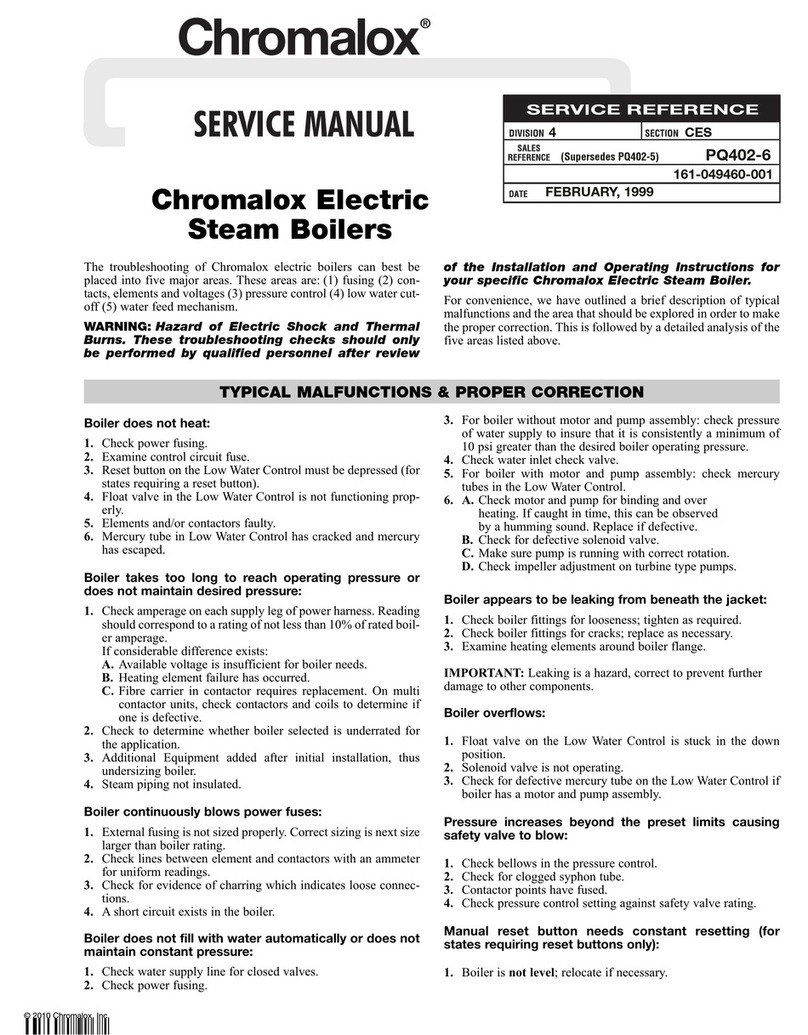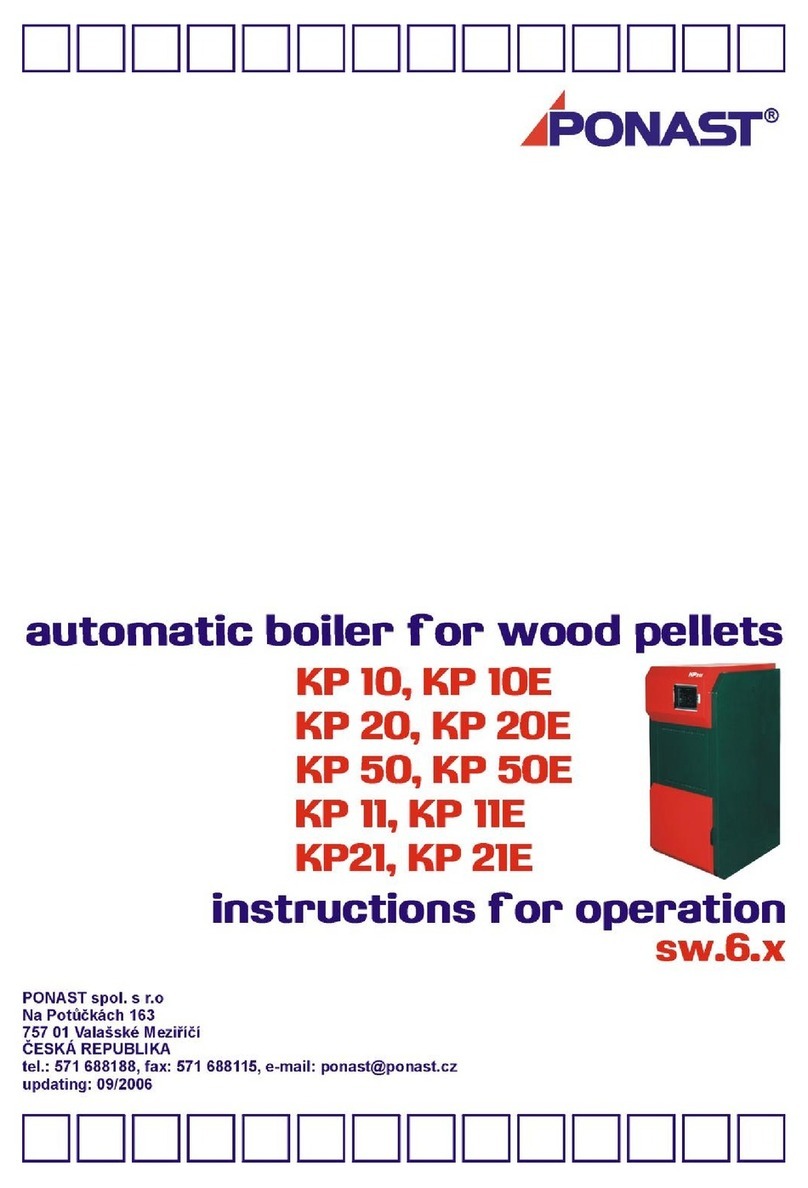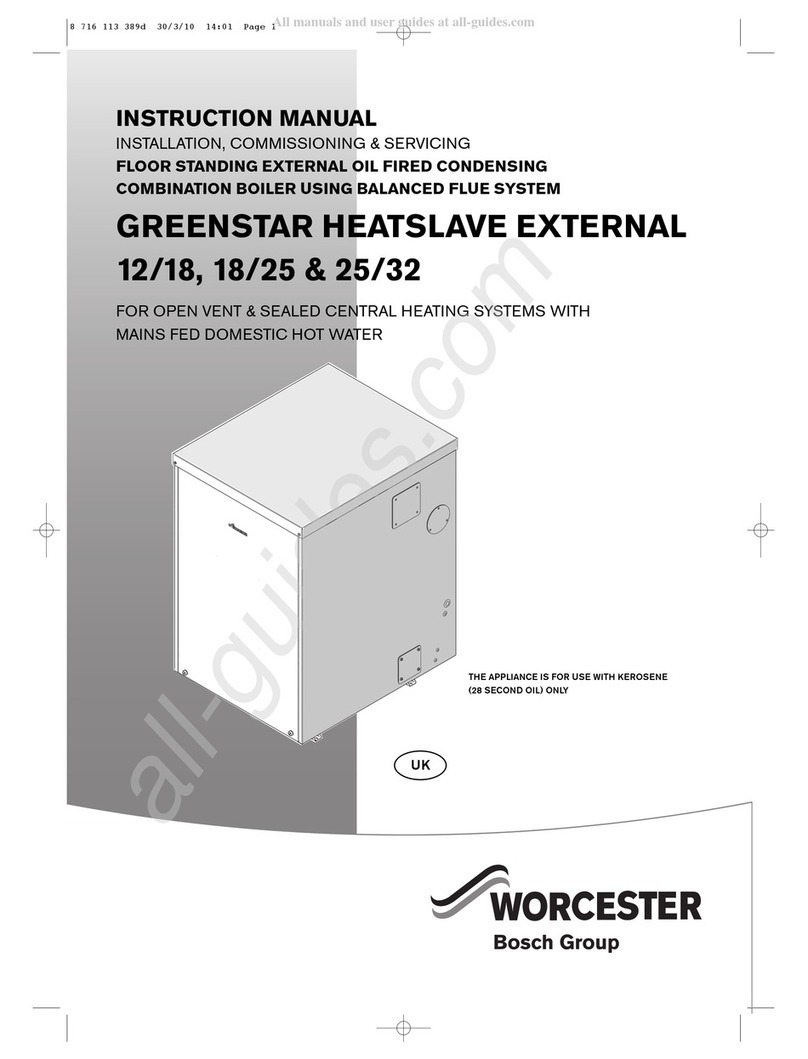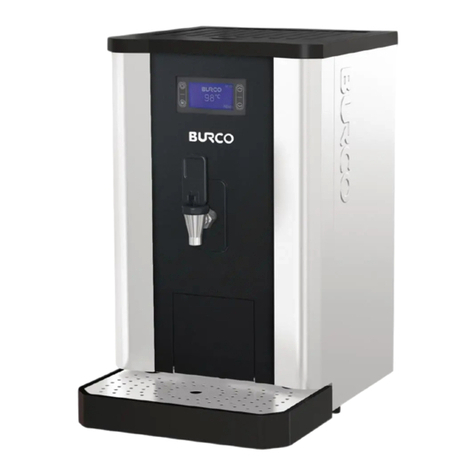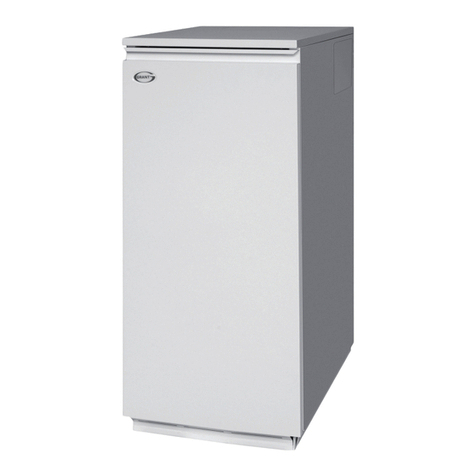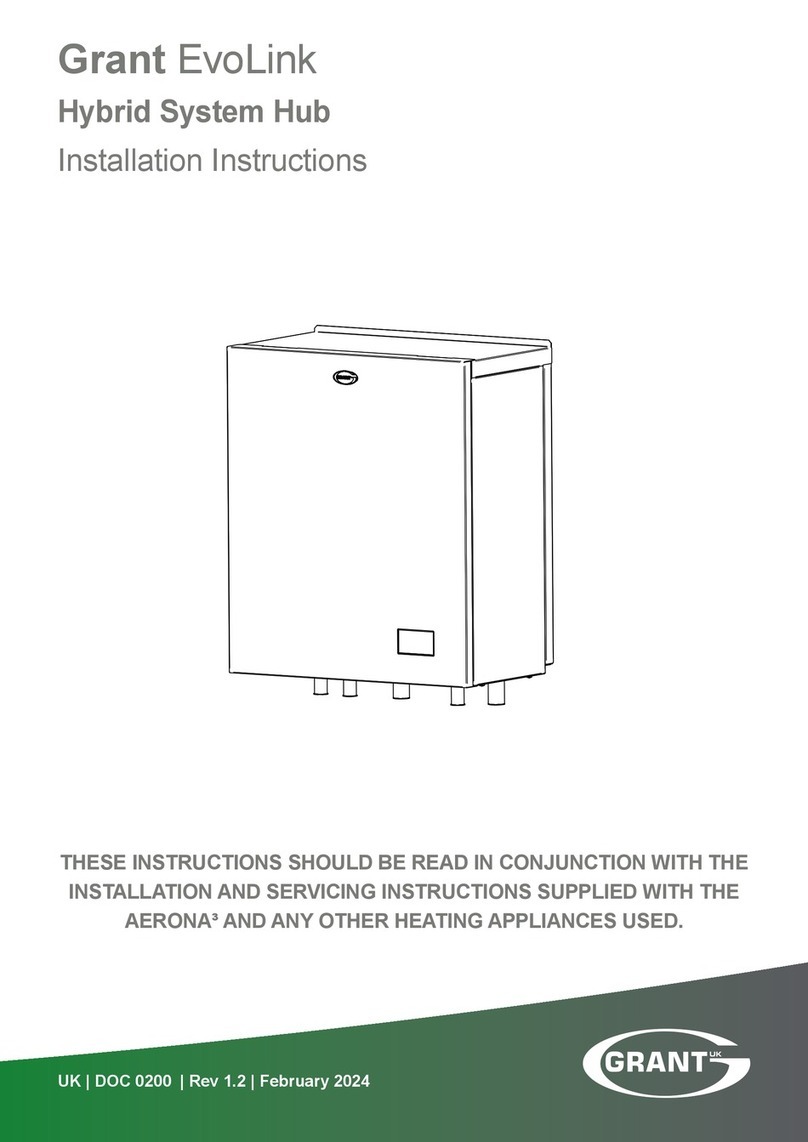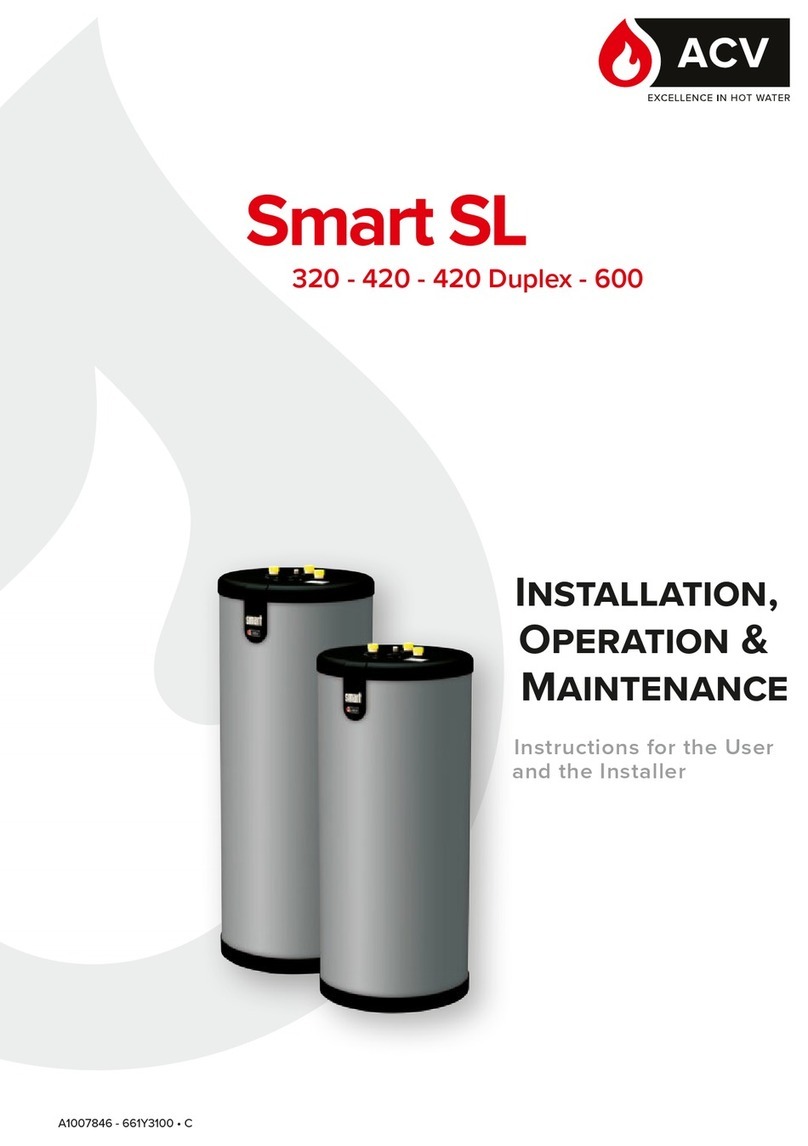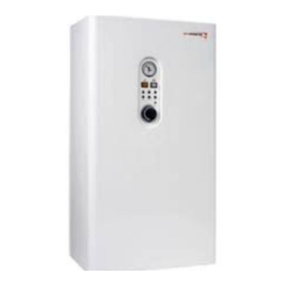
Section 4: InstallationPage 12
4.1 INTRODUCTION
The boiler is supplied already fully assembled in a carton which
is carefully packed with packing materials. As the boiler is wall
mounted all of the content of the boiler casing must be removed
with the packaging before installation can begin, to give access to
the rear xing panel.
The installation procedure therefore begins with unpacking and
dismantling of the packed boiler.
4.2 BOILER LOCATION
The module should installed externally, xed to a wall that is rm,
at, vertical and capable of supporting the boiler when full of
water. Refer to Section 2.1 for weights.
It does not require any special mounting provisions as the
temperature of the boiler casing is less than 50°C.
The module must be positioned such that the required clearances
from the low level ue outlet as shown in Figure 9-2 are achieved.
The module must be installed with the ue terminal terminating
at least two metres above ground level (refer to BS 5410-1). No
terminal guard can be tted if termination is less than two metres
above ground level. In this situation, use the Green ue system to
achieve the minimum height. Refer to Section 9.
The ue terminal must be a minimum distance of 1.8 metres from
an oil storage tank.
The ue terminal should be positioned so as to avoid products of
combustion accumulating in stagnant pockets around the building
or entering into buildings.
Sucient clearance must be allowed at the front of and below the
boiler to remove the burner and baes for servicing.
4.3 REGULATIONS COMPLIANCE
! NOTE !
Failure to install and commission appliances correctly may
invalidate the boiler guarantee.
Installation of a Grant Vortex boiler must be in accordance with
the following recommendations:
• Building Regulations for England and Wales, or the Building
Standards for Scotland, as appropriate.
• Any relevant local Byelaws which you must check with the
local authority for the area concerned.
• The Water Supply (Water Fittings) Regulations 1999 or
the Water Supply (Fittings) (Scotland) Byelaws 2014, as
appropriate.
• Applicable Control of Pollution Regulations.
• The following OFTEC requirements:
• OFS T100 Polythene oil storage tanks for distillate fuels.
• OFS T200 Fuel oil storage tanks and tank bunds for use
with distillate fuels, lubrication oils and waste oils.
Further information may be obtained from the OFTEC Technical
Book 3 (Installation requirements for oil storage tanks) and
OFTEC Technical Book 4 (Installation requirements for oil red
boilers).
The installation should also be in accordance with the latest
edition of the following British Standard Codes of Practice (and
any relevant amendments):
• BS 5410-1: 2019 (Code of practice for liquid fuel ring.
Installations for space heating and hot water supply purposes
for domestic buildings)
• This standard covers domestic installations up to 70kW.
• BS 5410-2: 2018 (Code of practice for liquid fuel ring. Non-
domestic installations)
• This standard should be followed with regard to
installations with an output capacity in excess of 70kW.
• Where the combined outputs of multiple appliances
located together at a domestic dwelling exceed 70kW
then then a dedicated plant room as specied in BS
5410-2 is recommended.
• BS EN 12828 (Heating systems in buildings. Design for
water-based heating systems)
• BS EN 12831-1 (Energy performance of buildings. Method
for calculation of the design heat load)
• BS EN 14336 (Heating systems in buildings. Installation and
commissioning of water-based heating systems)
• BS 7593 (Code of Practice for treatment of water in domestic
hot water central heating systems)
• BS 7671 (Requirements for Electrical installations, IET Wiring
Regulations)
• BS 7291 (Thermoplastics pipe and tting systems for hot and
cold water for domestic purposes and heating installations in
buildings. General requirements)
• BS 7074-1 (Application, selection and installation of
expansion vessels and ancillary equipment for sealed water
systems. Code of practice for domestic heating and hot water
supply)
• BS 2869 (Fuel oils for agricultural, domestic and industrial
engines and boilers. Specication)
! WARNING !
BS5410-1: 2019 requires that appliances located in a
building or structure or within a restricted area externally
should have a CO detector conforming to BS EN 50291-1
installed in the same room/space.
4.4 HEATING SYSTEM DESIGN
CONSIDERATIONS
! WARNING !
Before starting any work on the boiler or fuel supply,
please read the Health and Safety information given in
Section 15.
To achieve the maximum eciency possible from the Grant Vortex
boiler, the heating system should be designed to the following
parameters:
RADIATORS:
• Flow temperature 70°C
• Return temperature 50°C
• Dierential 20°C
Size radiators with a mean water temperature of 60°C.
Design system controls with programmable room thermostats
or use weather compensating controls to maintain return
temperatures below 55°C.
! NOTE !
The boiler should not be allowed to operate with return
temperatures of less than 40°C when the system is up to
temperature.
The use of a pipe thermostat is recommended to control the return
temperature when using weather compensating controls.
UNDERFLOOR:
• Flow temperature 50°C
• Return temperature 40°C
• Dierential 10°C
In underoor systems, it is essential that the return temperature
must be maintained at or above 40°C to prevent internal corrosion
of the boiler water jacket.
Refer to Section 2.5 for the size and type of the connections and
Section 5 for the position of the connections.
4 INSTALLATION





















